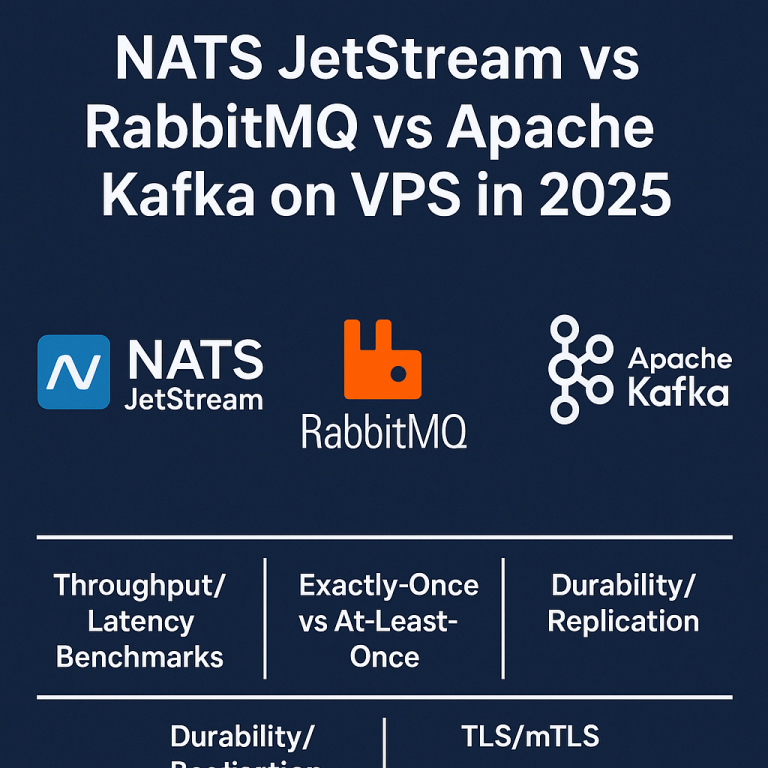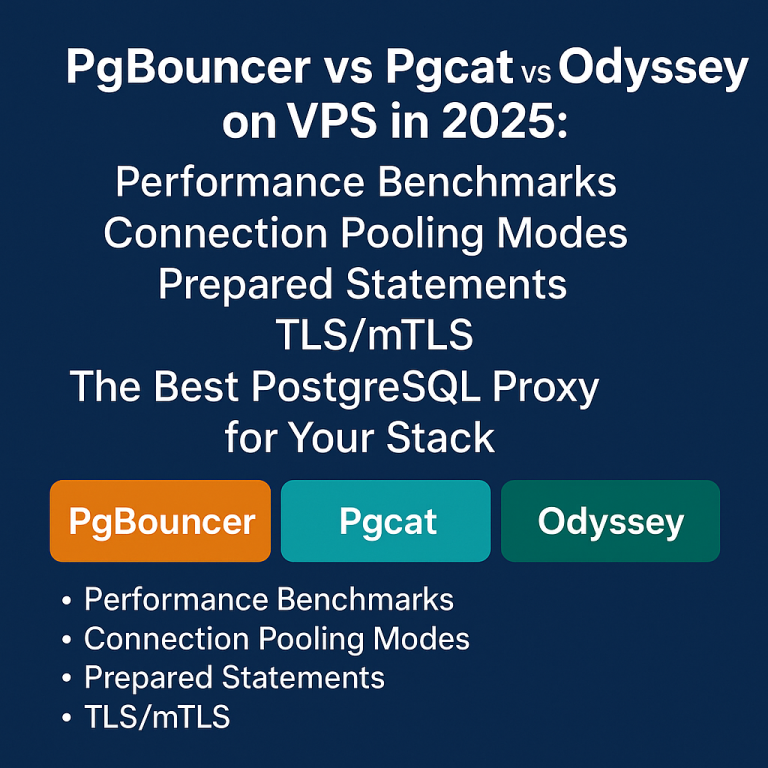SQLite remains one of the most deployed databases globally, but its single-node limitations can pose challenges for modern distributed applications. As small-to-medium applications require high availability, automatic failover, and geographic distribution, several SQLite replication solutions have emerged. In this comprehensive comparison, we’ll examine LiteFS, Litestream, rqlite, and dqlite to help you choose the best SQLite replication strategy for your VPS deployment in 2025.
Understanding SQLite Replication Challenges
SQLite’s serverless, file-based architecture makes it incredibly fast and reliable for single-node scenarios. However, traditional SQLite lacks built-in clustering, replication, and distributed consensus mechanisms that modern applications often require.
The four solutions we’re comparing tackle these challenges through different approaches:
- Streaming replication: Real-time log shipping and replay
- Consensus-based clustering: Raft protocol implementation
- Filesystem-level replication: FUSE-based transparent distribution
- Point-in-time backups: Continuous backup with fast restore
LiteFS: FUSE-Based Distributed SQLite
LiteFS is a FUSE-based distributed file system designed specifically for SQLite databases. Developed by Fly.io, it provides transparent replication by intercepting filesystem operations.
Key Features
- Consistency Model: Strong consistency with single-writer, multiple-reader architecture
- Failover: Automatic leader election with consul integration
- Object Storage: Built-in S3-compatible backup support
- Performance: Near-zero latency for local reads, minimal write overhead
Best for: Applications requiring transparent SQLite distribution with minimal code changes, especially when deployed on multiple VPS instances across regions.
Litestream: Streaming Replication and Backups
Litestream focuses on continuous streaming replication and point-in-time recovery rather than real-time clustering. It streams SQLite WAL (Write-Ahead Log) changes to replicas and object storage.
Key Features
- Consistency Model: Eventually consistent replicas with disaster recovery focus
- Failover: Manual failover with fast database restoration
- Object Storage: Excellent S3, Azure Blob, GCS support for continuous backups
- Performance: Minimal performance impact, sub-second recovery times
Best for: Single-node applications requiring robust backup strategies and disaster recovery capabilities, particularly when combined with automated backup solutions.
rqlite: Distributed SQLite with Raft Consensus
rqlite implements a distributed relational database using SQLite as the storage engine and the Raft consensus protocol for clustering and leader election.
Key Features
- Consistency Model: Configurable consistency levels (strong, eventual, none)
- Failover: Automatic failover through Raft consensus with sub-second election times
- Object Storage: Limited backup support, primarily focuses on cluster redundancy
- Performance: HTTP API adds latency, but excellent horizontal read scaling
Best for: Applications that can adapt to HTTP API access patterns and require true distributed clustering with automatic failover across multiple VPS nodes.
dqlite: Canonical’s Distributed SQLite
dqlite is Canonical’s distributed SQLite implementation, primarily used in LXD and other Canonical projects. It provides C library integration with Raft consensus.
Key Features
- Consistency Model: Strong consistency with linearizable reads and writes
- Failover: Automatic leader election with integrated Raft implementation
- Object Storage: No built-in object storage support
- Performance: Low-level C integration provides excellent performance
Best for: System-level applications and infrastructure software requiring embedded distributed SQLite with C/Go integration.
Detailed Comparison Matrix
Here’s a comprehensive comparison across key decision factors:
Consistency and Availability:
- LiteFS: Strong consistency, single-writer limitation, excellent read availability
- Litestream: Eventually consistent replicas, high availability through quick recovery
- rqlite: Configurable consistency levels, true multi-master capability
- dqlite: Linearizable consistency, requires odd number of nodes (3, 5, 7)
Operational Complexity:
- LiteFS: Medium complexity, requires FUSE and consul setup
- Litestream: Low complexity, single binary with simple configuration
- rqlite: Medium complexity, HTTP API requires application changes
- dqlite: High complexity, requires C/Go integration and cluster management
Object Storage Integration:
- LiteFS: S3-compatible backup support with configurable intervals
- Litestream: Excellent multi-cloud object storage support (S3, GCS, Azure)
- rqlite: Basic backup functionality, manual S3 integration required
- dqlite: No built-in object storage support
Performance and Resource Requirements
Resource Overhead:
- LiteFS: ~30-50MB RAM per database, minimal CPU overhead
- Litestream: ~10-20MB RAM, negligible CPU impact
- rqlite: ~50-100MB RAM per node, moderate CPU for consensus
- dqlite: ~20-40MB RAM, low CPU overhead with C integration
For modern VPS instances with 2GB+ RAM, all solutions are resource-efficient. However, Litestream has the smallest footprint for single-node deployments.
Deployment Scenarios and Recommendations
Small Web Applications (1-3 VPS instances):
Use Litestream for simple backup and recovery with cost-effective object storage. Deploy on Onidel VPS in Singapore with automated S3 backups.
Multi-Region Applications (3-5 VPS instances):
Consider LiteFS for transparent distribution or rqlite for true clustering. Deploy across Singapore, Sydney, and Amsterdam regions.
Infrastructure Software:
Use dqlite for system-level integration requiring embedded distributed consensus.
API-First Applications:
Choose rqlite if your application can adapt to HTTP-based database access patterns.
Conclusion
The choice between LiteFS, Litestream, rqlite, and dqlite depends on your specific requirements for consistency, complexity, and architectural constraints. For most small applications in 2025, Litestream provides the best balance of simplicity, reliability, and operational ease, especially when combined with modern object storage solutions.
For applications requiring true distributed writes and automatic failover, rqlite offers the most mature clustering solution, while LiteFS provides transparent distribution with minimal application changes.
When deploying any of these solutions, consider using high-performance VPS instances with modern filesystems and implementing comprehensive backup strategies to ensure data durability and business continuity.





